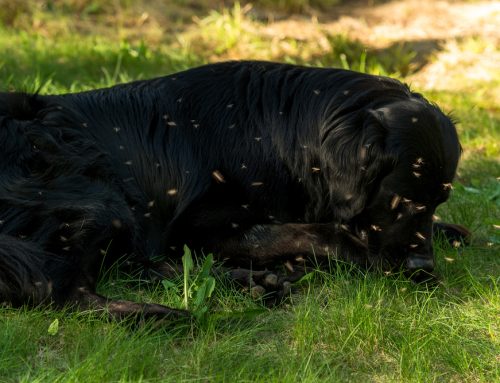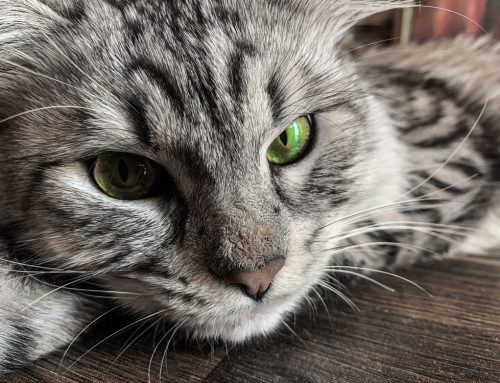Chilly winter Montana mornings are perfect for couch cuddles and bonding with your furry best friend. However, your cozy love fest sessions may have been halted by foul-smelling pet breath that makes your stomach turn. Although smelly dog breath is considered a normal part of sharing life with a pet, it may be the first clue that your pup is suffering from painful periodontal disease. Dental disease is one of the most commonly diagnosed problems in pets. Without treatment, it can lead to a variety of health issues, including heart disease, liver disease, kidney disease, or painful oral abscesses. Periodontal disease can affect pets when they are young, and more than 80% of dogs and cats will have some form of dental disease by the time they are 3 years old. Our Billings Animal Family Hospital team wants to ensure your pet’s chompers remain healthy through all life stages, and we discuss periodontal disease signs, treatment, and prevention tips.
What is periodontal disease in pets?
Periodontal disease is a progressive condition caused by oral bacteria that leads to inflammation of the tissues, bones, gums, and supporting structures of the teeth. Following a meal or snack, an invisible biofilm—or plaque—is laid down by the bacteria on the tooth’s surface below and above the gumline. Over time, plaque buildup and trapped oral bacteria can lead to gum inflammation (gingivitis) and pockets between the teeth and gums (periodontitis), both of which can lead to tooth loss. Not only can the trapped bacteria lead to bad breath, but they also can cause more serious medical problems, putting your pet’s organs and overall health at risk.
Periodontal disease signs in pets
Pets—especially cats—are experts at hiding illness, and it can be difficult to know if their mouth is painful or if they are experiencing problems with their teeth. In many cases, bad breath may be the only obvious sign of a problem. Periodontal disease signs and severity vary depending on the progression of the disease and may include:
- Irritability, or increased hiding in cats
- Decreased appetite
- Abnormal or difficulty chewing
- Excessive drooling
- Dropping food from the mouth while eating
- Removing food from the bowl and eating it off the floor
- Refusal or reluctance to take hard treats
- Swollen or red gums
- Swelling around the mouth or cheeks
- Nasal discharge
- Bleeding from the mouth
- Blood on chew toys
- Pain when the mouth or face is touched
- Behavior changes, or head and face shyness
Periodontal disease diagnosis and treatment in pets
Bring your pet in for an examination with our Billings Animal Family Hospital veterinarians if they show any signs of periodontal disease. We will develop a comprehensive and individualized dental care plan for your pet to ensure their smile remains sparkling. A nose-to-tail examination and an initial oral examination will be performed. Our veterinarian will likely recommend blood work to ensure your pet’s organs are healthy and can process the anesthesia required for a thorough oral exam and dental cleaning. For some pets, a chest X-ray or heart ultrasound may be advised to ensure there is a low risk of any problems occurring while they’re under anesthesia. An anesthetic dental cleaning is the safest, most effective way to evaluate and treat your pet’s teeth. Then we’ll take digital X-rays of your pet’s mouth so our team can assess problems above and below the gumline. After that, your pet’s teeth will be scaled, cleaned, and polished. In some cases, extractions may be required for broken or diseased teeth.
Periodontal disease prevention in pets

Yearly or more frequent veterinary exams are vital to preventing periodontal disease in your pet. The American Animal Hospital Association (AAHA) also recommends that small-breed dogs receive anesthetic dental cleanings starting when they are a year old, and large-breed dogs when they are 2. The frequency of cleanings depends on the severity of the periodontal disease. Additionally, establishing a home dental care routine is the best way to ensure your pet’s teeth remain healthy between veterinary visits.
Because oral bacteria can form on the teeth within 24 hours of cleaning, twice daily brushing is the gold standard to prevent buildup of plaque between professional cleanings. However, the best routine is one that is realistic and manageable for you and your pet. According to the National Pet Dental Health Association, brushing your pet’s teeth at least three times a week is beneficial. Ensure you use a pet-safe toothpaste approved by the Veterinary Oral Health Council (VOHC) because most human toothpastes contain ingredients that can be deadly to pets. Patience is key when starting a home dental care routine, and some pets, especially cats, may resist regular toothbrushing. In these cases, VOHC-approved dental chews, rinses, or treats can help slow periodontal disease progression. A home dental care routine, regular veterinary visits, and professional dental cleanings will ensure your pet’s teeth remain healthy through their gray muzzle years. Our Billings Animal Family Hospital team is here to keep your pet’s smile sparkling. Contact us with any questions about your pet’s teeth or to schedule an oral evaluation and dental cleaning.








Leave A Comment